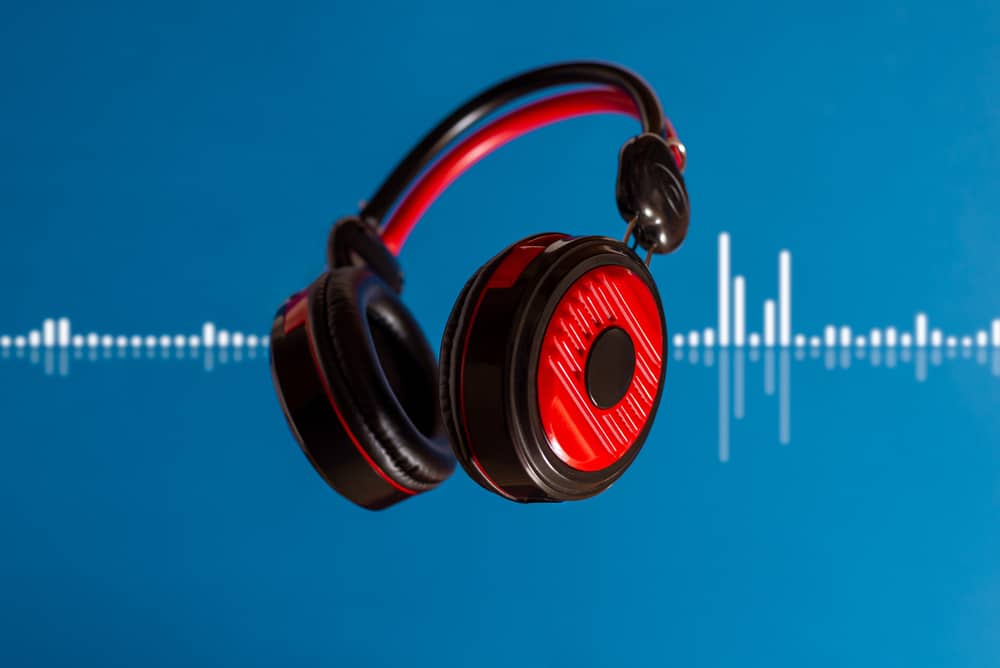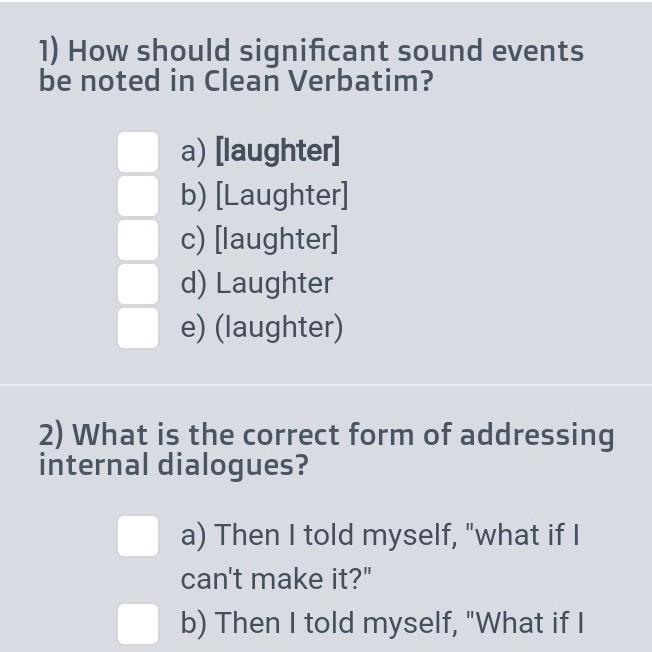When it comes to transcribing audio or video content, employing clean verbatim techniques is crucial for maintaining accuracy while eliminating unnecessary elements like filler words. However, one critical aspect that often poses a challenge is noting significant sound events. In this blog post, we will delve into how these events should be effectively captured in clean verbatim transcription. Mastering the art of documenting sounds such as laughter, applause, or background noise without compromising the clarity of the transcript requires a keen ear and a strategic approach. By following expert guidelines and best practices, you can learn to highlight important sound events seamlessly, just like a pro transcriber.
Introduction to Clean Verbatim
Clean verbatim is a transcription technique used to document audio recordings accurately while excluding non-verbal elements like false starts, filler words, and background noises.
Importance of Clean Verbatim
When noting significant sound events in clean verbatim, it is crucial to maintain the integrity of the dialogue while removing distractions that do not add value to the transcription. This ensures that the final transcript is concise and focused on the key message.
Enhancing Transcription Accuracy
By following the principles of clean verbatim, transcriptionists can produce high-quality transcripts that accurately reflect the spoken content. This technique helps to improve readability and comprehension for the end-users, leading to better communication outcomes.
Optimizing Search Engine Visibility
Implementing clean verbatim techniques can also improve search engine optimization (SEO) for audio transcripts. By focusing on relevant keywords and eliminating irrelevant noise, transcripts become more search-friendly, increasing the likelihood of discovery.

Understanding Significant Sound Events
When transcribing audio files with clean verbatim, it is crucial to note significant sound events accurately. These sound events can provide important context or information that adds value to the transcription.
Importance of Noting Sound Events
**Significant sound events** such as **pauses**, **laughter**, **background noise**, **interruptions**, or **emotional tone** can convey a lot about the conversation. They help in **capturing the essence** of the dialogue, making the transcript more comprehensive and **true to the original**.
Best Practices for Noting Sound Events
**To** accurately **capture significant sound events**, it is essential to **use timestamps**, **describe the sound**, and **indicate the speaker** if necessary. **Timestamps** help in locating the sound event quickly, providing **reference** for later review or **analysis**.
**For example**, if there is **background noise** such as a phone ringing, you can note it as “[(Timestamp) Phone ringing]” to **maintain clarity**.
Techniques for Noting Sound Events
When practicing clean verbatim, it is crucial to note significant sound events accurately for transcription integrity. Here are some effective techniques to ensure precise documentation of sound events.
1. Active Listening
Engage in active listening to capture all relevant sound events. Use headphones to focus on nuances, such as background noises, interruptions, or non-verbal cues. Active listening is key to understanding the context of the conversation.
2. Time Stamping
Utilize time stamps to mark the exact moments of significant sound events. This helps in locating and referencing specific segments during the transcription process. Time stamping facilitates accurate identification and analysis.
- Start time stamping when a notable sound event occurs.
- Include the timestamp in the transcript for easy navigation.
- Ensure consistency in time format to maintain clarity.
![Illustration of techniques for noting sound events in clean verbatim transcription conducted in [current year]](https://image.slidesharecdn.com/focusedsoapnoteforanxietyptsdandocdinassessingpatient-230119043528-89f8ecc2/85/FOCUSED-SOAP-NOTE-FOR-ANXIETY-PTSD-AND-OCDIn-assessing-patient-docx-1-320.jpg)
Best Practices in Clean Verbatim
Clean verbatim is a method of transcription that entails transcribing audio without including non-verbal elements like filler words, repetition, or false starts. When noting significant sound events in clean verbatim, it is crucial to follow specific best practices to ensure accuracy and clarity in the transcription process.
Use of Timestamps
When transcribing significant sound events in clean verbatim, utilizing timestamps can help in pinpointing the exact moment of the sound occurrence. Timestamps also aid in the synchronization of sound events with the corresponding text, enhancing the overall transcript quality.
It is recommended to include timestamps at regular intervals, such as every minute or any time a significant sound event occurs, to maintain the flow and coherence of the transcript.
Transcribing Sound Descriptions
Describing sound events accurately in clean verbatim transcription is vital for conveying the context and atmosphere of the audio content. Utilize descriptive terms to denote the type of sound, its intensity, frequency, and any other relevant characteristics.
- Be specific: Use precise terms to describe sound events, such as “loud bang,” “soft whispers,” or “distant sirens.”
- Include emotions: If the sound evokes certain emotions, mention them to provide a holistic understanding of the audio context.
Applications of Clean Verbatim in Different Fields
When it comes to noting significant sound events in clean verbatim, understanding its applications in various fields is crucial. Let’s explore how clean verbatim is utilized across different industries:
Legal Transcriptions
In legal transcriptions, accurate documentation of spoken content is paramount. Clean verbatim helps in capturing witness testimonies, court proceedings, and depositions with precision. Each word must be transcribed verbatim to maintain the integrity of the legal record.
Market Research
Market researchers often rely on transcriptions to analyze consumer behavior and preferences. Clean verbatim ensures that nuances in speech, tone, and emphasis are accurately transcribed, providing valuable insights for businesses.
Medical Transcriptions
In the healthcare sector, clean verbatim plays a vital role in documenting patient consultations, medical reports, and research interviews. Emphasizing the accuracy of medical terminologies and patient history is crucial for healthcare professionals.

Frequently Asked Questions
-
- What is clean verbatim?
- Clean verbatim is a type of transcription that excludes speech fillers, such as ‘um’, ‘uh’, and repeated words, to focus on the clear and precise transcription of spoken content.
-
- Why is mastering clean verbatim important?
- Mastering clean verbatim is important as it ensures that the transcribed text accurately reflects the spoken content without any distractions, making it easier to read and understand.
-
- How can I note significant sound events in clean verbatim?
- To note significant sound events in clean verbatim, you can use specific symbols or annotations to indicate applause, laughter, pauses, background noise, or any other relevant sounds.
-
- What are some tips for noting significant sound events like a pro in clean verbatim?
- Some tips for noting significant sound events like a pro in clean verbatim include listening attentively, using descriptive annotations, ensuring consistency in marking sound events, and practicing regularly.
-
- Can mastering clean verbatim improve the overall quality of transcriptions?
- Yes, mastering clean verbatim can significantly improve the overall quality of transcriptions by ensuring accuracy, readability, and professionalism in the transcribed content.
Mastering Clean Verbatim: Noting Significant Sound Events Like a Pro
Final Thoughts:
In conclusion, mastering clean verbatim and noting significant sound events like a pro requires attention to detail and practice. By accurately transcribing speech while also capturing important sound events, you can ensure that the integrity and context of the conversation are maintained. Remember to use onomatopoeic words for sound effects, include speaker tags for clarity, and adapt formatting techniques to distinguish sound events from speech. By following these guidelines, you can elevate your transcription skills and deliver high-quality, professional transcripts that accurately reflect the spoken content. Keep honing your skills, and soon you’ll be a clean verbatim expert!



